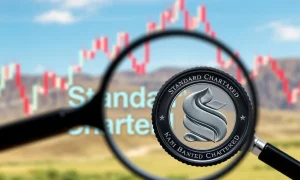Since the implementation of MiFID II in 2018, the financial landscape has undergone a profound transformation. This European Union directive, aimed at bolstering investor protection, enhancing market integrity, and standardizing reporting, promised a new era of transparency. Yet, years on, a critical question emerges: Are trading desks merely ticking compliance boxes, or are they truly leveraging MiFID II to unlock a deeper, strategic advantage? The firms poised to lead aren’t just meeting mandates; they’re understanding the profound value of transparency and efficiency in execution that MiFID II revealed.
Beyond Compliance: The Strategic Imperative of MiFID II
In the initial rush to conform, many trading desks understandably focused on integrating data-heavy systems and bolting on compliance modules. The priority was satisfying regulators, often overlooking the broader strategic implications. However, the true spirit of MiFID II extends far beyond mere adherence. It’s about fundamentally rethinking how execution data can drive smarter strategies and deliver superior client outcomes.
At its core, MiFID II champions ‘best execution’ – a mandate for firms to take “all sufficient steps” to achieve the optimal result for their clients. This involves meticulously monitoring various execution factors, including:
- Price: Ensuring the most favorable pricing.
- Speed: Executing trades swiftly to minimize market impact.
- Cost: Accounting for all explicit and implicit transaction costs.
- Likelihood of Execution or Settlement: Assessing the probability of a trade completing successfully.
While this spurred significant investment in trade analytics and execution management systems (EMS), the deeper challenge remains: moving beyond reactive compliance to proactive, data-driven strategy. In today’s fragmented market, understanding trade routing across multiple venues, dark pools, and algorithmic options – and their true costs – is paramount for any trading desk.
The Transparency Illusion: Unpacking Data in a Post-MiFID II World
Ironically, one of MiFID II’s unintended consequences has been an explosion of data without a proportional increase in clarity. Firms are now awash in execution reports, market snapshots, and venue statistics. But data, without context and proper analysis, can become mere noise. Trading desks must develop the capability to separate the signal from the static.
Consider these critical questions that transcend basic reporting:
- Which brokers consistently deliver lower slippage across different asset classes?
- Are specific execution algorithms underperforming during periods of high volatility?
- Are high-volume trades being routed to venues that introduce hidden fees or unnecessary delays?
- How does our execution quality compare against industry benchmarks for similar trades?
Answering these isn’t just an operational exercise; it’s a strategic imperative. It demands clean, accurate data, contextual insight, and performance benchmarks tailored to each asset class and trading objective. Without this, the promise of transparency risks becoming an illusion.
Driving Accountability: The Rise of Data-Driven Decision Making
Perhaps the most significant shift post-MiFID II is the heightened expectation around accountability. Buy-side institutions are no longer content with opaque processes; they demand transparency not only from their internal trading desks but also from their brokers, asset managers, and technology providers. This push has made performance reviews, broker scorecards, and granular trade cost benchmarking standard practice.
This increased demand for accountable performance tracking is fueling renewed interest in sophisticated systems that can not only track data but interpret it meaningfully. Firms are actively investing in advanced trade analytics platforms to gain a clearer, real-time view of their execution quality. This is where a robust transaction cost analysis (TCA) solution becomes indispensable. When deployed effectively, TCA moves beyond a compliance tool to become a powerful optimization engine, helping firms to:
- Uncover hidden trading inefficiencies.
- Rigorously assess and compare broker performance.
- Make informed, strategic decisions about trade routing and execution strategy.
By transforming raw data into actionable insights, trading desks can demonstrate tangible value and build stronger trust with their clients.
A Culture Shift: From Defensive to Strategic Post-MiFID II
The true opportunity presented by MiFID II lies in fostering a profound culture shift within financial institutions. Instead of perceiving regulations as burdensome impositions, forward-thinking firms are embracing them as catalysts for introspection, innovation, and strategic evolution. This means cultivating an environment where:
- Traders are not just trained to meet compliance requirements but deeply understand how their execution decisions impact long-term client performance and firm profitability.
- Compliance teams are seamlessly integrated with analytics and trading teams, fostering collaborative insights rather than siloed operations.
- Partners – from brokers to technology vendors – are held accountable not just for regulatory transparency, but for delivering measurable, real-world results in execution quality.
This holistic approach transforms compliance from a cost center into a value driver, enabling firms to differentiate themselves in a competitive market.
Final Thoughts: Reframing the Landscape with MiFID II
We have undeniably entered an era where data is no longer merely a byproduct of trading activity; it has become a strategic asset. In the post-MiFID II world, those who master its complexities and wield data wisely will emerge as leaders. Trading desks that successfully transition from a reactive stance to a reflective one – moving from simple compliance to profound clarity – will not only circumvent potential fines but, more importantly, unlock unprecedented value for their firms and their clients. It’s about asking the right questions, leveraging the answers, and ultimately seeing the bigger picture that MiFID II intended to reveal.
Frequently Asked Questions (FAQs)
Q1: What is the primary goal of MiFID II?
MiFID II, or the Markets in Financial Instruments Directive II, aims to increase transparency across financial markets in the European Union, enhance investor protection, and standardize reporting practices to improve market integrity and efficiency.
Q2: How has MiFID II impacted trading desks specifically?
MiFID II has significantly impacted trading desks by mandating stricter requirements for best execution, increased data reporting, and greater transparency in trade routing and costs. This has pushed desks to invest in advanced analytics and execution management systems.
Q3: What does ‘best execution’ mean under MiFID II?
Under MiFID II, ‘best execution’ means that firms must take all sufficient steps to obtain the best possible result for their clients when executing orders. This involves considering factors such as price, speed, cost, likelihood of execution, and settlement.
Q4: Why is Transaction Cost Analysis (TCA) important in a post-MiFID II world?
TCA is crucial post-MiFID II because it allows firms to analyze and understand the true costs of their trades, identify inefficiencies, assess broker performance, and make data-driven decisions to optimize execution strategy, going beyond mere compliance to achieve strategic advantage.
Q5: How can firms move beyond just MiFID II compliance to strategic advantage?
Firms can achieve strategic advantage by viewing MiFID II not just as a regulatory burden but as an opportunity for introspection. This involves leveraging execution data for actionable insights, fostering a culture of data-driven accountability, integrating compliance with analytics, and continuously optimizing trading processes for better client outcomes and firm profitability.






















